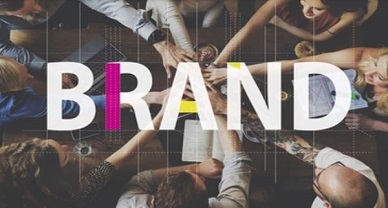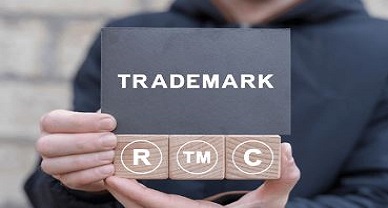Empowering Trademarks: How Emerging Technologies Are Revolutionizing Brand Protection
Why do trademarks matter in corporate strategy?
A trademark is, by definition, a sign capable of distinguishing the goods or services of one enterprise from those of other enterprises.[1]. Intellectual property rights protect trademarks. In simpler words, it is a distinctive sign, symbol, logo, word, phrase, or combination of elements that a company uses to identify and distinguish its goods and services. It serves as an essential element in making up the brand identity, customer loyalty, and market differentiation. A strong trademark opens the door for instant recognition and emotional connection with the consumers such as the infamous Nike’s “swoosh”[2]. It gives the respective companies a competitive edge in a saturated market. Trademarks encompass a substantial portion of the deal’s value. It assures the consumers of consistent quality and prevents confusion that is created by counterfeit products. It fosters revenue generation through licensing and franchising. For instance, Coca-Cola[3] Utilizes its trademark portfolios in the creation of various forms of income. Trademarks can be very important for businesses entering new markets.
Emerging technologies for better Trademark Protection
Several challenges occur along the way as the companies establish their brand presence domestically and internationally. Some of them include counterfeit products and brand dilution, which undermines brand value by mimicking logos, packaging, and trademarks, often producing goods that are nearly different from the original. This season it is experienced especially in the fashion industry, electronics, and pharmaceutical companies. This is because it is likely to hurt the image and image of the brand or the market’s company. For instance, famous brands like Louis Vuitton[4] and Chanel[5] have clones coming up in China and other regions of Southeast Asia. Cross-border trademark enforcement, in countries with first-to-file systems such as China, can be problematic for international companies. A brand may lose its right in a market if another party registers the mark before them. The standard of protection of trademarks also varies among different countries, making the ones having weaker standards prone to exploitation. Protection of trademarks across borders is also costly, and can also take a lot of time. Influence of AI, AI tools may be applied to copy logos and packages pretty closely, so the buyer will hardly be able to distinguish the original thing from the fake one. Technologies that are reshaping the trademark protection landscape include,

AI and Machine Learning[6], via monitory trademarks AI systems, can handle large volumes of websites, social media, and any e-commerce site to detect infringement of their trademarks. When filing for a trademark, the companies use Artificial Intelligence to conduct searches to avoid repetition or overlap as much as possible. With the help of automated enforcement e-commerce platforms such as Amazon detects counterfeit products to enforce IP rights. Through past infringement cases, AI has improved its detection rate and uses new tactics by the counterfeiters.
Blockchain Technology[7] refers to a secured process of recording and sharing information across a network of computers to enhance trademark protection. By introducing smart labels and smart packages, companies can prove the legitimacy of a product at any point in the chain. For instance, when using product codes that connect to the blockchain, it provides consumers with information on the product’s history and its journey thus reducing cases of fakes. Smart contracts automatically execute IP-related agreements, such as licensing or distribution deals, ensuring compliance without the need for manual intervention. De Beers uses blockchain technology to track diamonds from mines to consumers.
Data Analytics for IP enforcement, with the help of pattern detection, infringement trends are identified and companies can predict where and how violations might occur, allowing for proactive measures. Data analytics systems also monitor major e-commerce platforms for counterfeit listings, generating real-time alerts for IP owners.
Case studies of the integration of AI technology in corporate practices for trademark protection
Coca-Cola
It is the best example where value is placed on company trademarks. These trademarks could be almost anything-the characteristic of red and white, the curvaceous bottle shape, or the unique font used in this literature. Indeed, there is a global trademark protection approach now used by this company to file its intellectual property with a single application in most countries using the Madrid Protocol. Coca-Cola actively guards its trademarks against fakes by proactively working with customs departments and online sellers to track down and eliminate fakes. To that end, Coca-Cola carefully manages its licensing agreements so only partners it deems of adequate quality and brand value get to use its trademarks. It uses blockchain technology to ensure product authenticity and streamline its supply chain making the trademarked products traceable and verifiable.
Apple
It adopts an overarching global strategy on trademark protection, which encompasses the following major tactics. First, Apple ensures early registration of its trademarks, such that it obtains protections across categories like its iconic logo and product names such as “iPhone” and “iPad.” In this way, no other parties will be able to obtain marks that can in any way weaken the Apple brand. Monitoring and enforcement is another activity that is practiced by Apple, where it surveys the Internet market for counterfeit products as well as infringement of the Company’s trademarks. They have sued individuals and firms for counterfeiting and firms that were registering domain names that resembled the marks owned by them. Finally, Apple uses its trademarks largely within its marketing strategies in such a way that they are displayed in advertisements, product packaging, and retail shops, which serves to sustain its high-tech and premium brand image.
The legal framework: an overview of Indian and International trademark laws
Trademarks Act, 1999[8] primarily deals with all trademark-related aspects in India such as registration, protections, and enforcement, etc. section 2(1) (zb) defines a trademark as “any marks capable of distinguishing goods or services, including logos, sounds, and even shapes. Trademarks can be registered for 10 years and renewed indefinitely. Section 28 of the said act deals with the registration while section 29 deals with infringement and remedies. Infringement is the unauthorized use of an identical or similar mark that leads to confusion. Remedies include injunctions, damages, and accounts of profits. Recent developments include e-filing and expedited examination procedures designed to facilitate registration. Even non-traditional marks, such as sound marks in the form of a Yahoo yodel[9] recognized in 2008 and an ICICI corporate jingle[10] recognized in 2011, are indicative of the dynamic nature of Indian trademark law. In Dharampal Satyapal Limited Vs. As held in Basant Kumar Makhija and Ors[11]., while responding to a defense under Section 30(2)(e) of the Trademarks Act, 1999 raised by the defendant, the plaintiff is allowed to plead invalidity of the defendant’s trademark registration. This judgment also stipulates that the Court may determine whether the plaintiff’s attack on the registration is tenable on the preliminary level, and if not, the case may be staid until the longevity of the mark has been established through rectification proceedings is resolved. In the case of Himalaya Wellness Company and Ors. Vs. Abony Healthcare Limited and Ors[12]., the Delhi high court ruled that Abony Healthcare’s adoption of the trademarks Liv.55, Liva55, and Liv999 infringed upon Himalaya Wellness’ Liv.52 trademark for liver tonic products. The court found that the defendant’s marks were likely to cause confusion and deception, especially since the trade dress, including the orange, white, and green colors closely mirrored Himalayas branding. Therefore, the court issues a permanent injunction against the use of the Liv marks by Abony Healthcare. With globalization, trademarks indeed require protection across jurisdictions. For this purpose, numerous treaties and international frameworks provide mechanisms for cross-border trademark protection. Madrid Protocol administered by the World Intellectual Property Organization (WIPO) enables a business to register trademarks across multiple member countries by filing just one application. India became a part of the protocol in 2013. Trade-Related Aspects of Intellectual Property (TRIPS) enunciates minimum standards for trademark protection and their enforcement with the theme of global harmony.
Conclusion
Trademarks have been defined many times differently in today’s diverse complex and globalized business world. They are strategic tools that transmit presuppositions of identity, reputation, and consumer confidence in a brand. For a company to control the market a serious approach to the management of trademarks is required that will protect the company’s intellectual property. Among the matters that become significant, such questions as counterfeiting, digital misuse, and cross-border operations arise. Thus, the tempo of integrating sound trademark strategies into corporate systems becomes very vital as technology and global collaboration evolve. Trademarks remain strategic assets in the promotion of uniqueness, customer retention, and closure of position in the growing global economy.
Author: Niyati Priyadarshini, in case of any queries please contact/write back to us at support@ipandlegalfilings.com or IP & Legal Filing
[1] (WIPO – World Intellectual Property Organization) https://www.wipo.int/web/trademarks > accessed 21 November 2024.
[2] ‘NIKE Trademarks – A COMPLETE GUIDE’ (Trademarks Made Easy® | Trademark Attorney Michael Kondoudis) <www.mekiplaw.com/nike-trademarks-explained/> accessed 21 November 2024.
[3] ‘Terms of Use | World of Coca-Cola’ (Atlanta Attraction, Museum, & Venue | World of Coca-Cola) <www.worldofcoca-cola.com/about-us/terms-of-use> accessed 21 November 2024.
[4] Brand Protection / Louis Vuitton https://eu.louisvuitton.com/eng-e1/magazine/articles/brand-protection> accessed 21 November 2024
[5] Legal at Chanel <www.chanel.com/in/anti-counterfeit/> accessed 21 November 2024
[6] (WIPO – World Intellectual Property Organization) <www.wipo.int/export/sites/www/about-ip/en/artificial_intelligence/call_for_comments/pdf/ind_revella.pdf> accessed 21 November 2024.
[7](WIPO – World Intellectual Property Organization) <www.wipo.int/wipo_magazine_digital/en/2020/article_0002.html> accessed 21 November 2024.
[8] ‘India Code: Trade Marks Act, 1999’ (India Code: Home) <www.indiacode.nic.in/handle/123456789/1993> accessed 21 November 2024.
[9] (World Trademark Review)<www.worldtrademarkreview.com/article/yahoo-yodel-becomes-first-registered-sound-mark> accessed 21 November 2024.
[10] (World Trademark Review)<https://indianexpress.com/article/news-archive/web/icici-secures-rights-for-corporate-jingle/> accessed 21 November 2024.
[11] I.A. 14129/2023, in CS (Comm) 806/2017
[12] 2023 SCC OnLine Del 6594


